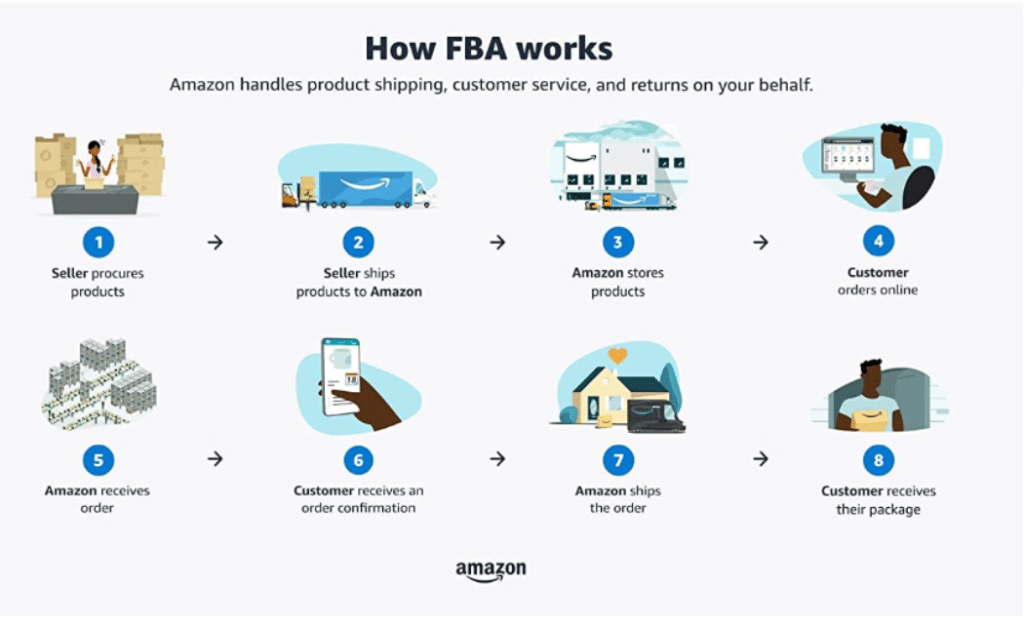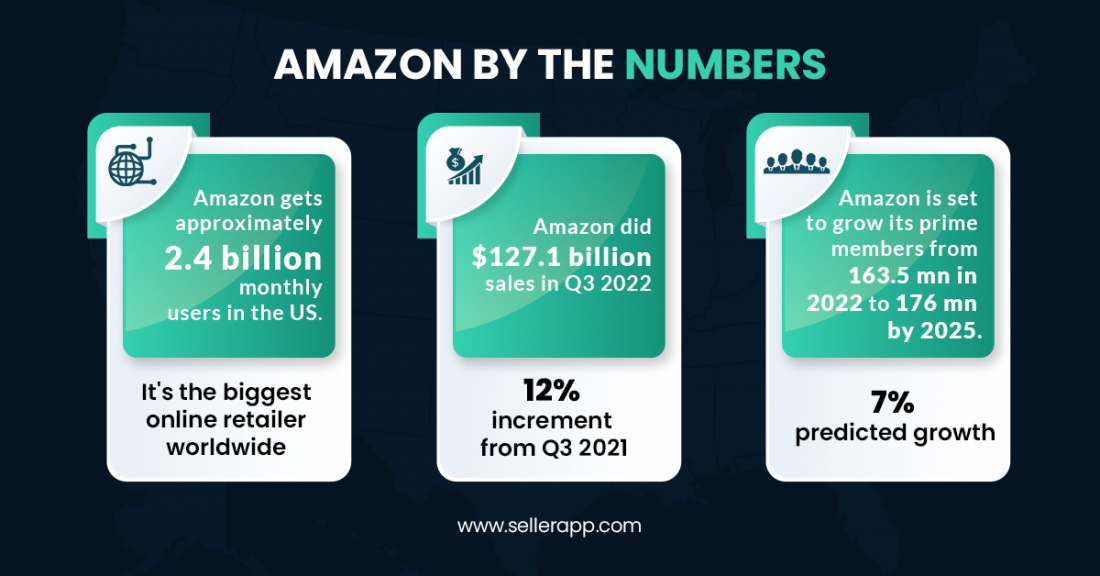Uncover the secrets to mastering Amazon FBA fees and maximizing your profits with this comprehensive guide for sellers.
Table of Contents
- Introduction: Understanding Amazon’s FBA Service
- Amazon FBA Fees Overview
- Breaking Down Amazon FBA Fee Types
- Small and Light: A Special FBA Program
- Calculating Your Amazon FBA Fees
- Strategies to Reduce Amazon FBA Fees
- Common Mistakes to Avoid with FBA Fees
- Keeping Up with Changes in FBA Fees
- Conclusion: Mastering Amazon FBA Fees for Your Business
Introduction: Understanding Amazon’s FBA Service
Have you ever wondered how people sell products on Amazon without dealing with the hassle of shipping and handling? That’s where Amazon FBA comes in! Let’s delve into the world of Amazon FBA and uncover its secrets.
What is Amazon FBA?
Amazon FBA stands for Fulfillment by Amazon. It’s a service that allows sellers to store their products in Amazon’s warehouses. When someone makes a purchase, Amazon takes care of picking, packing, and shipping the item to the customer. This makes selling on Amazon super convenient for many people.
Benefits of Amazon FBA for businesses
One of the main reasons why sellers choose Amazon FBA for their online businesses is because it saves them a lot of time and effort. Instead of worrying about logistics, they can focus on growing their business and reaching more customers. Plus, Amazon’s reputation for fast shipping and excellent customer service can help boost sales for sellers using FBA.
Amazon FBA Fees Overview
In order to run a successful Amazon FBA business, it is crucial to understand the fees associated with using this service. Let’s break down the different costs you can expect when utilizing Amazon’s FBA program.
Types of FBA fees
There are several types of fees that sellers need to consider when using Amazon FBA. These include storage fees, fulfillment fees, and other charges that may apply depending on the services used. It’s essential to be aware of these costs to accurately calculate your expenses and pricing strategies.
Why understanding FBA fees is important
Knowing and comprehending the FBA fees is vital for managing a profitable Amazon business. By understanding these costs, sellers can better plan their finances, set competitive prices, and optimize their operations to maximize profits. Ignoring or underestimating these fees can lead to financial setbacks and impact the success of your business on Amazon.
Breaking Down Amazon FBA Fee Types
When you start selling products through Amazon’s FBA service, understanding the different types of fees you may encounter is crucial. Let’s take a closer look at the various fees Amazon charges for their FBA services.

Image courtesy of www.yaguara.co via Google Images
Monthly Inventory Storage Fees
Amazon charges a fee for storing your products in their warehouses each month. This fee is based on the space your inventory occupies and the duration of storage. It’s important to manage your inventory efficiently to avoid unnecessary storage fees.
Fulfillment Fees per Order
Every time Amazon picks, packs, and ships an order for you, they charge fulfillment fees. These fees cover the costs of labor, packaging materials, and shipping. Understanding these fees can help you price your products effectively and maintain a healthy profit margin.
Long-Term Storage Fees
If your products remain in Amazon’s warehouses for an extended period, you may be subject to long-term storage fees. Amazon incentivizes sellers to keep their inventory moving by charging these additional fees for items that occupy space for too long. Regularly reviewing your inventory levels can help you avoid these extra costs.
Small and Light: A Special FBA Program
When it comes to selling products on Amazon, size and weight can play a significant role in determining the fees associated with the Fulfillment by Amazon (FBA) service. This is where the Small and Light program comes into play, offering a specialized solution for sellers with smaller items. Let’s delve into what this program entails and how it can benefit sellers looking to streamline their operations and reduce costs.
Eligibility for Small and Light
The Small and Light program is designed to cater to products that are, as the name suggests, small and light. Eligible items typically weigh less than 12 ounces and have dimensions that fit specific criteria set by Amazon. By meeting these requirements, sellers can qualify for reduced fulfillment fees, making it an attractive option for those with compact merchandise.
Fee Differences in Small and Light
One of the key benefits of the Small and Light program is the cost savings it offers compared to standard FBA fees. Since smaller and lighter items are easier and cheaper to handle in terms of storage and fulfillment, Amazon passes on these savings to sellers enrolled in this specialized program. Lower fulfillment fees can translate to better profit margins for sellers, making it a strategic choice for certain types of products.
Calculating Your Amazon FBA Fees
When you’re running a business on Amazon using the FBA service, it’s crucial to understand the fees associated with it. Fortunately, Amazon provides a handy tool called the Amazon FBA Calculator to help you estimate these costs accurately. Let’s walk through how you can use this tool to calculate your Amazon FBA fees.

Image courtesy of m.facebook.com via Google Images
Using the Amazon FBA Calculator
The Amazon FBA Calculator is a simple yet powerful tool that allows you to input key details about your products, such as size, weight, and selling price. By entering this information, the calculator can provide you with an estimate of the fees you can expect to pay for using Amazon’s FBA service.
To get started, head over to the Amazon FBA Calculator page on the Amazon seller portal. Input the necessary details for your product, such as dimensions, weight, and selling price. The calculator will then display the fees associated with storing, picking, packing, and shipping your item through Amazon’s FBA program.
Understanding the Calculator’s Results
Once you have used the Amazon FBA Calculator to estimate your fees, it’s crucial to understand the results it provides. Take note of the breakdown of costs, including storage fees, fulfillment fees, and any other charges that may apply. This will help you plan your budget and pricing strategies effectively.
| Fee Type | Description | Rate |
|---|---|---|
| Referral Fee | Fee charged as a percentage of the sale price for each item sold | 15% on average |
| Amazon FBA Fulfillment Fee | Fee for Amazon to handle packing, shipping, and customer service for your products | Varies based on size and weight of the item |
| Closing Fee | Fee charged for selling in certain categories such as books, DVDs, and video games | $1.80 per item sold |
| Monthly Storage Fee | Fee based on the volume of space your inventory occupies in an Amazon fulfillment center | Varies based on time of year and size of items |
| Long-Term Storage Fee | Fee for keeping items in storage for more than 365 days | $6.90 per cubic foot |
By analyzing the calculator’s results, you can identify areas where you may be able to optimize your costs. For instance, if you notice that storage fees are high due to excess inventory, you can adjust your inventory management practices to avoid long-term storage fees.
Strategies to Reduce Amazon FBA Fees
Reducing Amazon FBA fees can significantly impact your profitability as a seller on the platform. By implementing smart strategies, you can cut down on costs and maximize your earnings. Here are some effective ways to lower your Amazon FBA fees:
Optimizing Product Size and Packaging
One key factor that influences your FBA fees is the size and weight of your products. By optimizing your product size and packaging, you can lower your fulfillment costs. Avoid using bulky packaging that adds unnecessary weight and dimensions to your shipments. Consider using efficient packaging materials that are lightweight yet sturdy to protect your products during transit. By reducing the size and weight of your packages, you can minimize the fees associated with storage and shipping.
Inventory Management to Avoid Long-Term Fees
Another crucial strategy for reducing Amazon FBA fees is to carefully manage your inventory. Long-term storage fees are charged for items that have been stored in Amazon’s warehouses for an extended period. To avoid these additional costs, regularly monitor your inventory levels and adjust your restocking quantities to prevent overstocking. Utilize Amazon’s inventory management tools to track your sales velocity and ensure that you are not holding onto products that are not selling well. By staying on top of your inventory and maintaining optimal stock levels, you can prevent incurring long-term storage fees.
Common Mistakes to Avoid with FBA Fees
One common mistake that sellers make when calculating FBA fees is failing to consider all the different types of fees involved. It’s crucial to account for not just the basic storage and fulfillment fees, but also additional charges like long-term storage fees and any other applicable costs. Neglecting to include all fee types in your pricing and budgeting can lead to unexpected expenses that eat into your profits.

Image courtesy of www.sellerapp.com via Google Images
Misunderstanding Size and Weight Fees
Another pitfall to watch out for is misunderstanding the size and weight fees associated with Amazon FBA. Incorrectly categorizing your products by size or weight can result in higher fees than anticipated. Make sure to accurately measure and label your items to avoid any surprises when it comes to pricing. Being clear on how these fees are determined can help you make informed decisions about your product offerings.
What are the first steps to get started with Amazon FBA?
If you’re looking to start selling on Amazon using FBA, the first step is to create an Amazon seller account. Once you’ve set up your account, you can start listing your products on the platform. Make sure to choose the Fulfilled by Amazon option when creating your product listings. After that, you’ll need to send your products to Amazon’s fulfillment centers for storage and shipping to customers. It’s essential to do thorough research and understand the FBA fees involved to ensure you’re prepared for the costs associated with this service.
Can you make money with Amazon FBA after fees?
Yes, you can make money with Amazon FBA even after accounting for the fees. By carefully managing your expenses, pricing your products competitively, and optimizing your operations, you can still generate a profit through Amazon FBA. It’s crucial to understand your costs, monitor your sales performance, and continually look for ways to improve efficiency to maximize your profits. With dedication and strategic planning, many sellers have found success in building profitable businesses using Amazon FBA.
Keeping Up with Changes in FBA Fees
Amazon, like any other business, constantly evaluates its pricing structure to ensure it remains competitive and sustainable. Factors such as market demand, operational costs, inflation, and new technology can influence Amazon’s decision to adjust its FBA fees. By adapting to these changes, Amazon aims to provide sellers with a fair and efficient platform for their businesses.
Staying Informed About Fee Updates
It is essential for Amazon sellers to stay informed about any changes in FBA fees to make informed decisions and maintain profitability. To keep up-to-date with fee updates, sellers should regularly check Amazon’s official seller resources, subscribe to seller forums and newsletters, and attend webinars or seminars hosted by Amazon. By staying informed, sellers can adjust their pricing strategies and operational processes to navigate any fee changes effectively.
Conclusion: Mastering Amazon FBA Fees for Your Business
Throughout this guide, we have delved into the world of Amazon FBA fees and uncovered the essential factors that every seller should consider. By understanding these fees and how they can impact your business, you are better equipped to make informed decisions and maximize your profits on Amazon.
Key Takeaways
Remember, knowing the different types of Amazon FBA fees, such as monthly inventory storage fees and fulfillment fees per order, is crucial for managing your expenses effectively. By utilizing tools like the Amazon FBA calculator, you can accurately estimate your costs and plan ahead to ensure profitability.
Strategies for Success
Implementing strategies like optimizing product size and packaging, as well as managing your inventory to avoid long-term storage fees, can help you minimize your expenses and enhance your bottom line. By staying informed about changes in FBA fees and regularly reviewing your pricing and budgeting strategies, you can adapt to the evolving landscape of Amazon’s fees and maintain your competitiveness in the marketplace.
Empowering Your Business
As you continue your journey with Amazon FBA, remember that mastering the intricacies of FBA fees is a vital step towards building a thriving online business. By staying proactive, informed, and resourceful, you can navigate the complexities of Amazon’s fee structure with confidence and drive your business towards sustainable growth and success.
